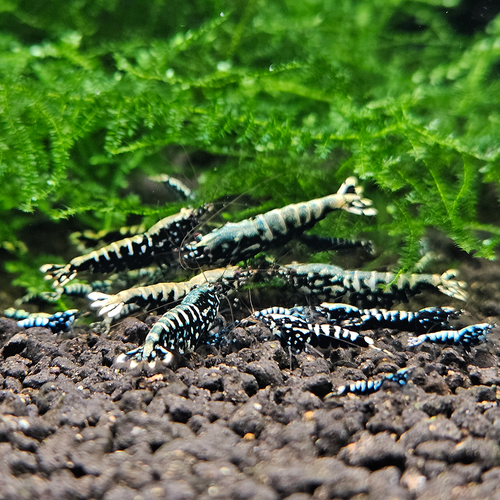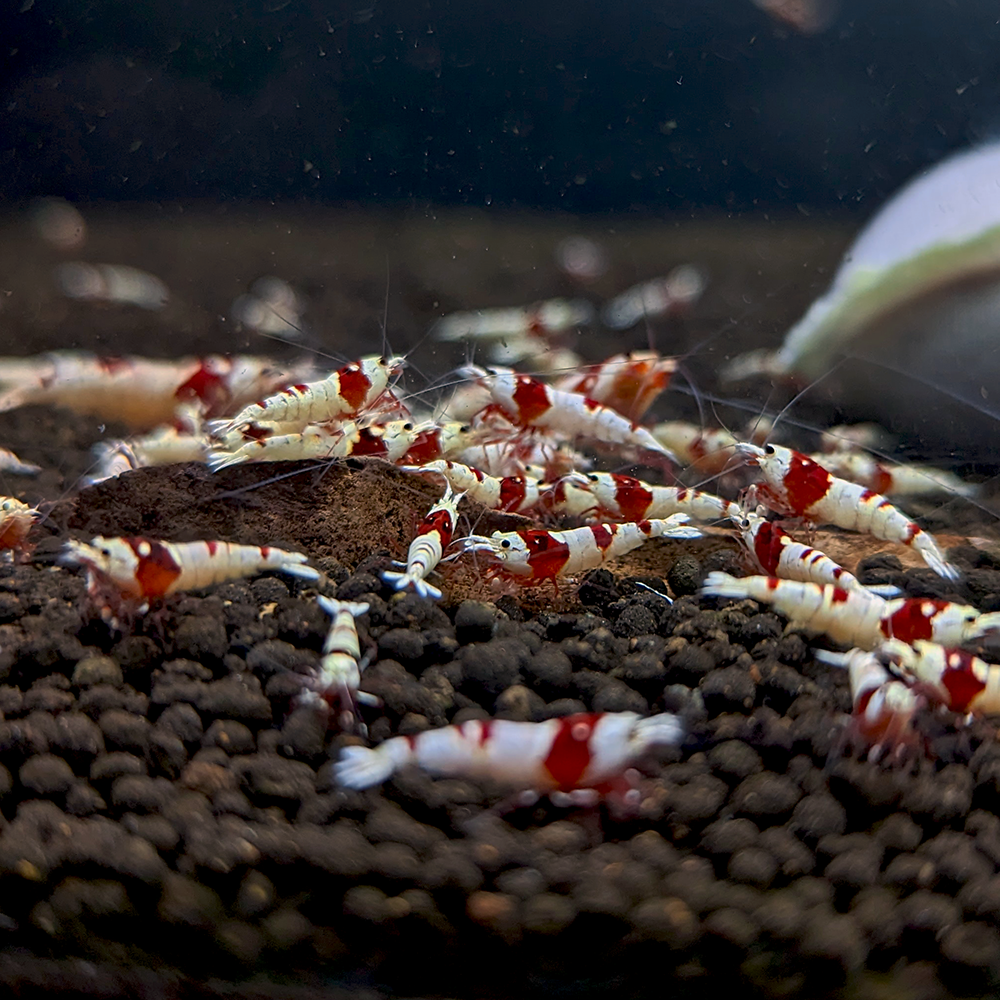Moss is a must in a shrimp tank!
Nothing pairs better than some nice green plants in your shrimp tank, and shrimp LOVE moss. Aside from providing beautiful hiding grounds for berried females and freshly molted shrimp, they also keep your nutrients in check.
I have had quite a few messages this week, asking how to best keep moss. They can be particular, but when you get your parameters right, it will grow beautifully and add that natural look that we strive for in our shrimp tanks. If you're having issues with moss, the first things I look at are:
Temps. Your water temps are going to be one of the first reasons people are not successful with moss in their shrimp tanks. Moss does NOT like warm water. As the temperatures rise above 73-74 degrees, you will see a decrease in growth rate. They might not appear to grow at all. 75-76 degrees and you might start to see some yellowing of the moss, and finally above 76 degrees you will see the moss begin to die back and grow algae. Once algae infest moss, 9 times out of 10 its going to be a battle to eradicate.
Nutrients. If you do large weekly water changes in your shrimp tanks, a lower population might not be able to create enough nutrients to feed your moss. For me personally (and many planted tank owners) I do weekly 50% water changes, and unless my population is booming with many babies, I need to fertilize a little bit after water change. Since I do not have a high-tech tank, I keep the dosing to right after water change, and not again until I change the water next week. This keeps all my moss green and growing well.
pH. Not as often do I see pH as an issue. Usually, the pH will cause problems if you cannot keep it stable. This can be from many reasons, all of which I will not go into in today's blog, but fluctuations happen at night/day change, and according to how planted it is. Plants consume co2 during the day, but will consume oxygen at night, and co2/o2 levels will change your pH levels. If you don't have a good buffer, these fluctuations will go wild and cause issues in your livestock and plants.
Water flow and clarity. I find these two go hand in hand in my shrimp tanks. If my filters get clogged and I start to see a bacterial bloom happen, I usually see my moss stress out if I don't address it within a couple days. Some moss requires at least some flow to survive, or they will start to die back and sometimes once they start that process, it's almost impossible to correct it. I see this with Jade Lotus especially. Once you correct your filter flow and the water clears up, the moss is happy again and you will see those beautiful fresh green fronds growing again. z
These are the top reasons I see people struggle with their moss. Not to say they're the ONLY reasons, but if you are having issues, this is a good place to start. As always, if you have any questions beyond this article, feel free to reach out and I am happy to help as much as I can!
Nothing pairs better than some nice green plants in your shrimp tank, and shrimp LOVE moss. Aside from providing beautiful hiding grounds for berried females and freshly molted shrimp, they also keep your nutrients in check.
I have had quite a few messages this week, asking how to best keep moss. They can be particular, but when you get your parameters right, it will grow beautifully and add that natural look that we strive for in our shrimp tanks. If you're having issues with moss, the first things I look at are:
Temps. Your water temps are going to be one of the first reasons people are not successful with moss in their shrimp tanks. Moss does NOT like warm water. As the temperatures rise above 73-74 degrees, you will see a decrease in growth rate. They might not appear to grow at all. 75-76 degrees and you might start to see some yellowing of the moss, and finally above 76 degrees you will see the moss begin to die back and grow algae. Once algae infest moss, 9 times out of 10 its going to be a battle to eradicate.
Nutrients. If you do large weekly water changes in your shrimp tanks, a lower population might not be able to create enough nutrients to feed your moss. For me personally (and many planted tank owners) I do weekly 50% water changes, and unless my population is booming with many babies, I need to fertilize a little bit after water change. Since I do not have a high-tech tank, I keep the dosing to right after water change, and not again until I change the water next week. This keeps all my moss green and growing well.
pH. Not as often do I see pH as an issue. Usually, the pH will cause problems if you cannot keep it stable. This can be from many reasons, all of which I will not go into in today's blog, but fluctuations happen at night/day change, and according to how planted it is. Plants consume co2 during the day, but will consume oxygen at night, and co2/o2 levels will change your pH levels. If you don't have a good buffer, these fluctuations will go wild and cause issues in your livestock and plants.
Water flow and clarity. I find these two go hand in hand in my shrimp tanks. If my filters get clogged and I start to see a bacterial bloom happen, I usually see my moss stress out if I don't address it within a couple days. Some moss requires at least some flow to survive, or they will start to die back and sometimes once they start that process, it's almost impossible to correct it. I see this with Jade Lotus especially. Once you correct your filter flow and the water clears up, the moss is happy again and you will see those beautiful fresh green fronds growing again. z
These are the top reasons I see people struggle with their moss. Not to say they're the ONLY reasons, but if you are having issues, this is a good place to start. As always, if you have any questions beyond this article, feel free to reach out and I am happy to help as much as I can!




